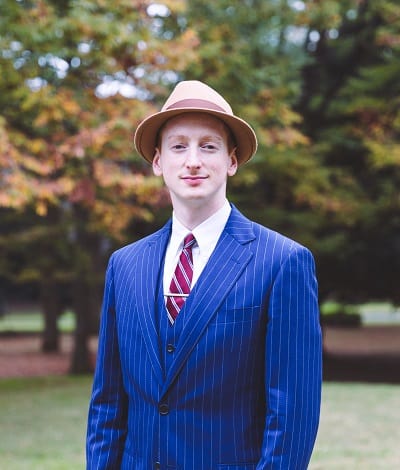1. Prelude
Hello everyone and welcome to my article on Shunga. In this article, I will talk about the meaning of the word shunga and his etymology, then I will present the main artists of this sub-genre of Ukiyo-e.
Please, enjoy your reading and don’t hesitate to comment. If I made any mistake, I will do my best to correct it as quickly as possible.
Disclaimer:
This article is about Shunga, ukiyo-e erotic japanese art. Please note that many of the images are explicit in nature. Therefore, this article only addresses people mature enough to handle erotic art.
Summary
- Prelude
- Shunga definition
- Etymology of Shunga
- The origins of Shunga
- In China, we go.
- In Japan, we go back.
- Westerner in Japan and critics of shunga.
- Famous artist of the Shunga style
- Hokusai, the grand kacho-ga master
- Keisai Eisen
- Utagawa Kuniyoshi
- Kunisada Tsunoda, Toyokuni III
- Eizan Kikugawa
- Conclusion
2. Shunga definition
Shunga is a Japanese art sub-genre of Ukiyo-e which depicts the entire gamut of sensual pleasures; Ukiyo-e describing men and women in different situation in the act of intercourse.
3. Etymology of Shunga
As you can see this word is composed of 2 characters (2 kanjis):
- The first kanji is 春 which means “spring” and his reading is “shun”.
- The second kanji is 画 which means “picture” and his reading is “ga”.
4. The origins of Shunga
In China, we go.
The word “Shunga” is an abbreviation of the ancient Chinese words “春宮画” and “春宮秘戯画” which means respectively “Spring Palace Painting” and “Spring Palace Secret Painting”. “Spring Palace” could be interpreted as the palace of the Tenshi prince (Son of heaven), or in a broader interpretation as the “The Palace God of Spring”. It is imagined that the image of the “Spring” season is related to a floating feeling about the budding nature between men and women. Therefore, the word “Spring Palace Painting” is thought to have the meaning of a picture depicting the “spring feelings” of men and women.
The Kanō school(狩野派, Kanō-ha), painters which served the Edo Shogunate for generations, regarded the “画筌(がせん)” “Gasen” as a textbook. There is an item called “好色春画之法” “Amorous Spring Painting Method”, and it is derived from the fact that spring paintings are always composed of twelve figures, referring to the quoted “後漢の蔡邕” “Cia Yong” which lived in 132~192, ”天子は一(ひとたび)に十二女を娶(めと)る。十二月に象(かたど)ると云ふによれり” which translate into; the son of heaven (Tenshi, who should rule the world in ancient China), connects with twelve women from each month and follows the operation of heaven.
This is referring to a secret art of the Tenshi, who should have a relationship between Yin and Yang (man and woman), and it is thought that the picture depicting Tenshi’s secret art was called “Spring Palace Painting” or “Spring Palace Secret Painting”.
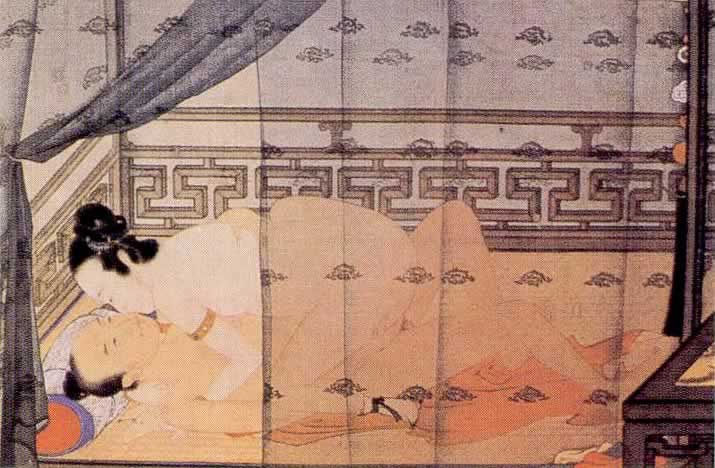
In Japan, we go back.
In Japan, during the Heian period (794 to 1185), among the courtiers class, through hand-scrolls, we could find sexual scandals from the imperial court or monasteries, yet the characters tended to be limited to monks and courtiers itself.
During the Edo period (1603 to 1867), the shunga style was very popular due to the easy access to these prints, thanks to technological improvement in ukiyo-e production. At the time, there was also attempt by the government to censor this art, the first edict issued by the Tokugawa shogunate was in 1661. In 1722, The Kyōhō Reforms were very strict and the shunga production had to go underground, despite these repression, the style continued to be produced and popular among all social classes of the time.
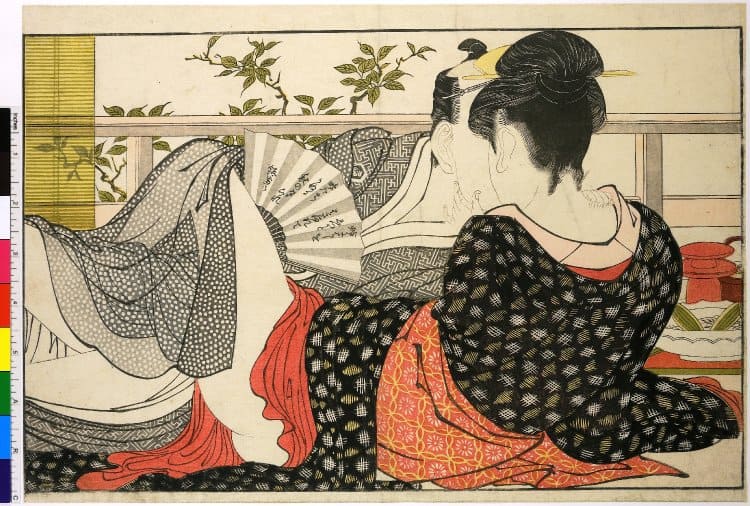
Westerner in Japan and critics of shunga.
Because of the erotic nature of shunga, during the 19th century, westerners were not found of this art style (Monta Hayakawa and C. Andrew Gerstle reference). Francis Hall, a business man from America, in 1859, he describes shunga art as “vile pictures executed in the best style Japanese art.” Hayakawa related that Hall was shocked and disgusted when on two separate occasions his Japanese acquaintances and their wives showed him shunga at their homes.
During the Meiji era (1868-1912), because of the importation of western technologies with the photo-reproduction techniques, shunga art couldn’t keep up with this new techniques with the erotic photography, which made it to decline.
5. Famous artist of the Shunga style
Hokusai, his shunga art
When you do an article about ukiyo-e and there sub-genre, you have to check if Hokusai did try it or not. And in most cases, he did. Therefore, I will present some of Hokusai Shunga art.
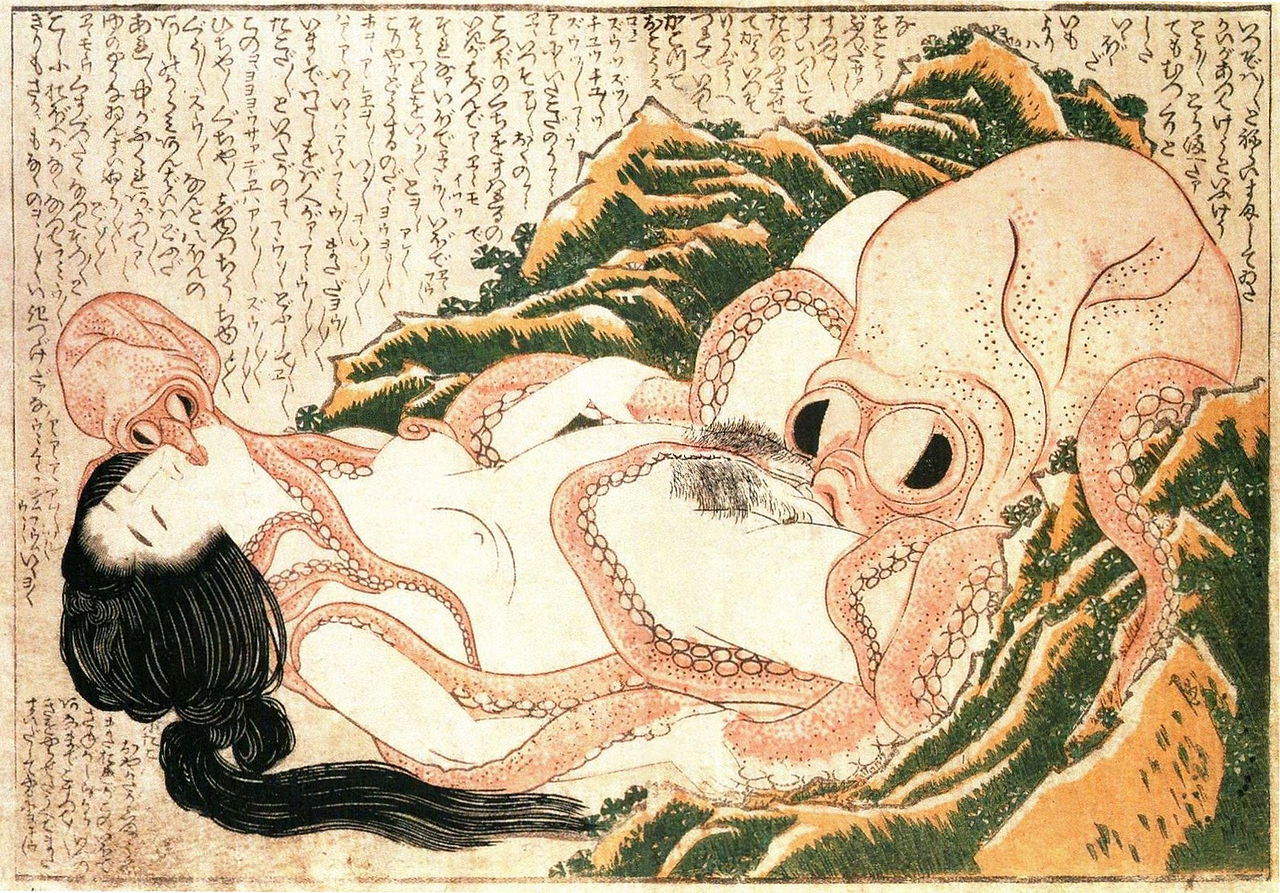
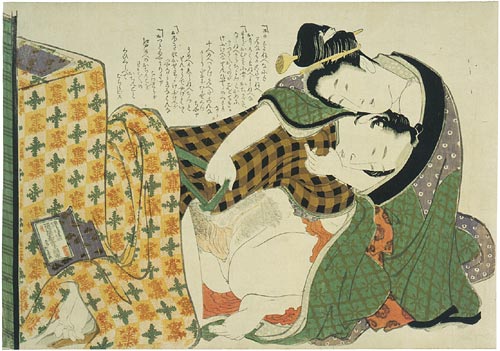
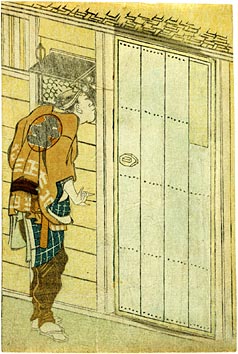
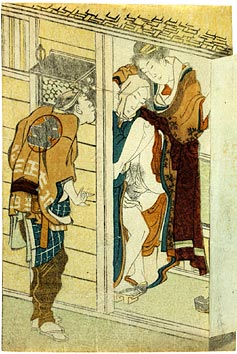
Keisai Eisen
Keisai Eisen is a contemporary of Hokusai, he is an ukiyo-e master known for his bijin-ga style with their enormous head.
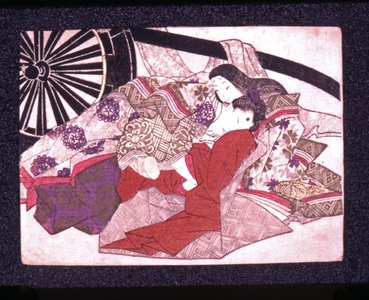
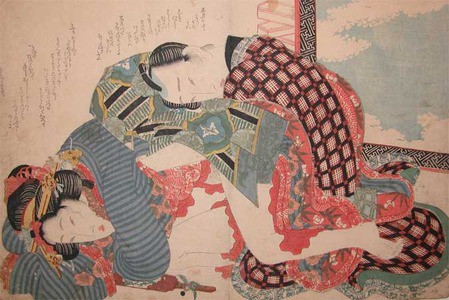
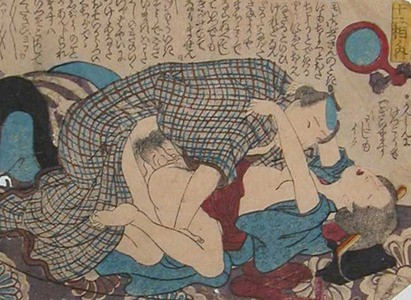
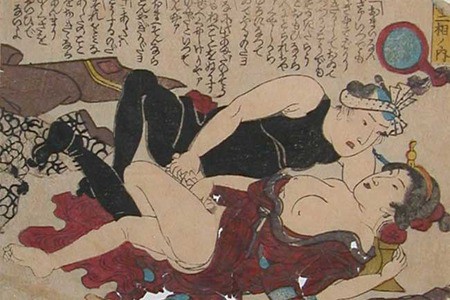
Utagawa Kuniyoshi
Here is the part about the very prolific Utagawa Kuniyoshi, he draw a vast variety of ukiyo-e, but here we will focus on his shunga work.
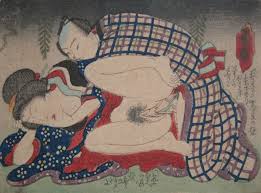
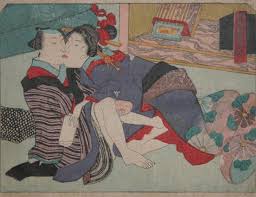
Kunisada Tsunoda, Toyokuni III
He was a pupil of Toyokuni at the age of 14, in the Utagawa school. He traditionally focused on the theme such as kabuki and bijinga. His first recorded print to date is from 1807, and an illustrated book in 1808. Many of Kunisada’s work were very successful and he was considered the star of the Utagawa school. After his teacher died in 1844, he adopted his name and became Toyokuni III. Kunisada was very famous in his time and the most active ukyio-e artist of the 19th century. It is even said that his fame surpassed those of his contemporaries Hiroshige and Kuniyoshi.
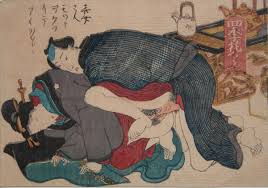
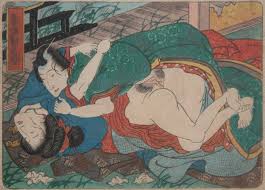
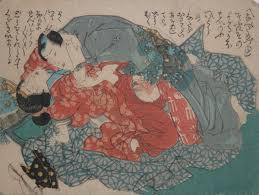
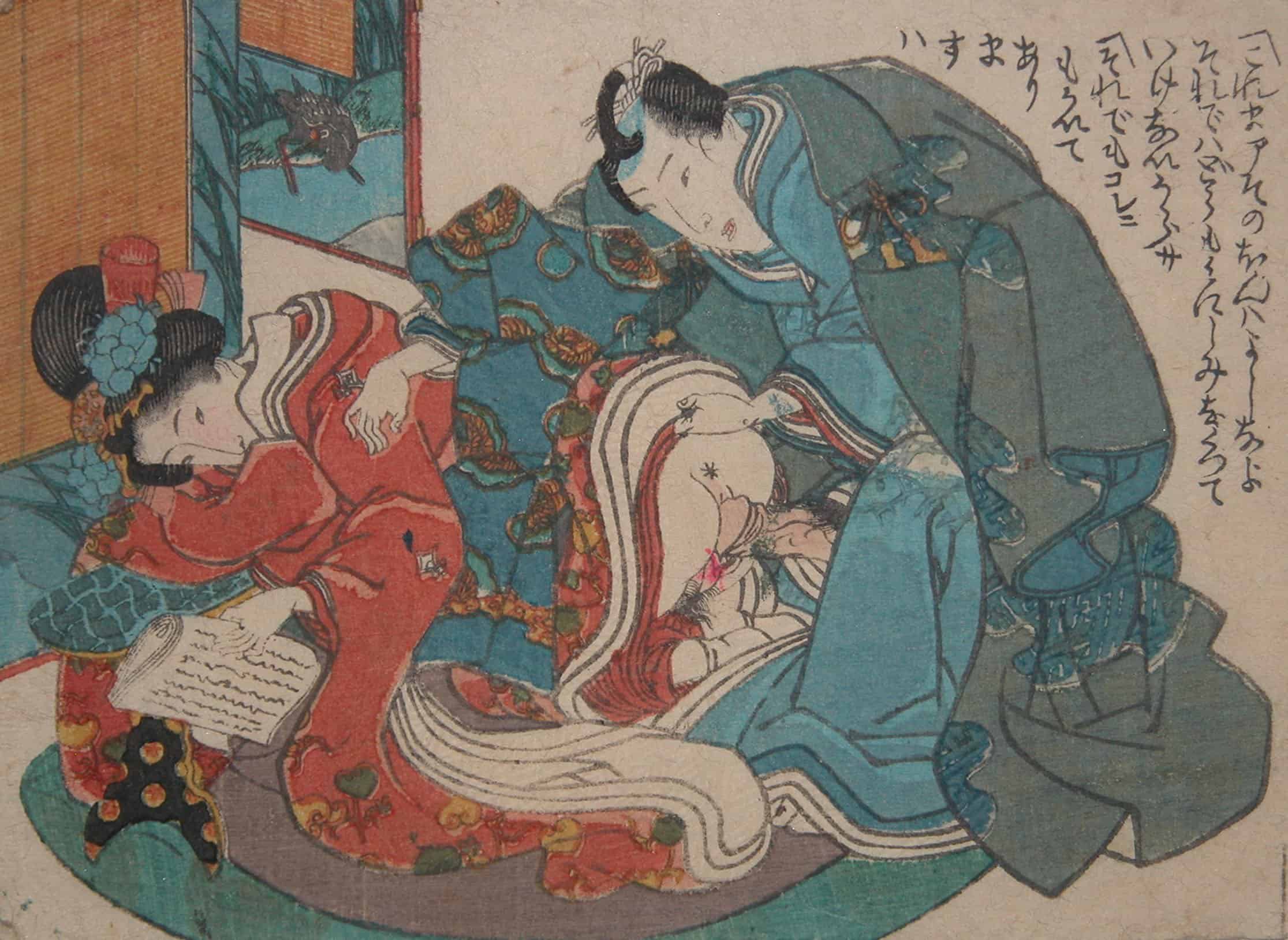
Eizan Kikugawa
He began his artistic career studying with his father Eiji Kikugawa, a Kano painter and fan maker, before pursuing printmaking under Hokusai’s pupil Hokkei. From the start of the 19th century to his retirement, Eizan was leading artist of bijin-ga (pictures of beautiful women) and shunga woodblocks (erotic prints). He is considered the founder of the Kikugawa style.
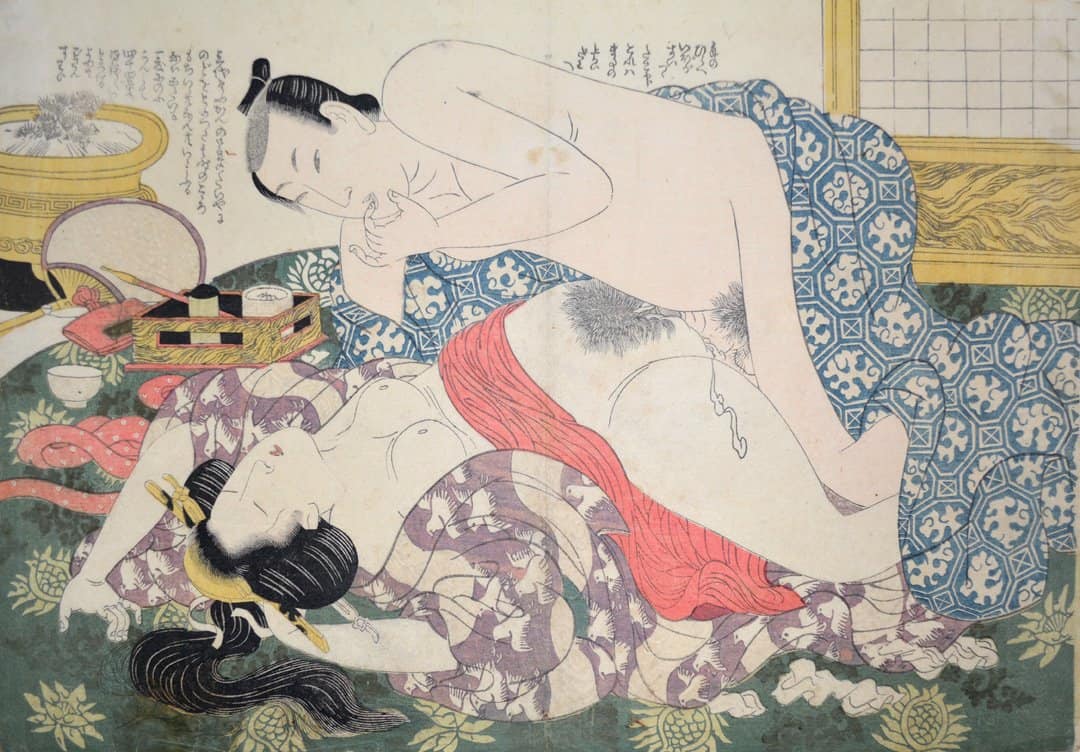
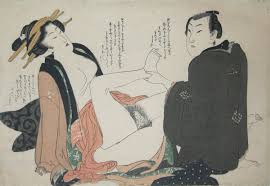
Conclusion
Here you have it, I have presented to you some of the shunga artist. But, there are a lot of them out there, therefore, I have hand picked today’s list. I hope you enjoyed it.
For website touring visitor
When you have finished reading this article, please, take a look at my portfolio.

